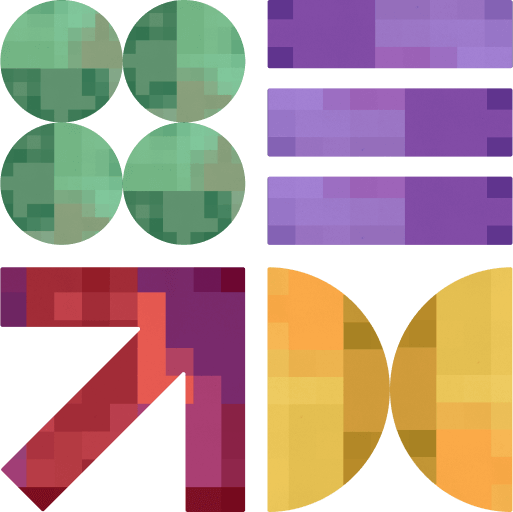How to Create a Sustainable Custom Software Solution

A custom software solution is no longer just a matter of performance or scalability; it’s a strategic lever for sustainability.
With data centers consuming over 2% of global electricity and the ICT sector on track to contribute 14% of global carbon emissions by 2040, software is fast becoming one of the biggest hidden drivers of environmental impact.
So, if your software isn’t built with sustainability in mind, it’s part of the problem.
💡 Pro Tip! Mastering the 5 Ws of custom software ensures every line of code solves the right problem, at the right time, for the right users.
The Importance of Sustainable Technologies
As the digital world scales, so does its environmental footprint. And software has quietly become one of its biggest culprits.
Bloated codebases, unoptimized workloads, and unchecked compute cycles now rival manufacturing processes in energy intensity. Every redundant loop, idle thread, or over-provisioned instance silently drains power, driving up emissions and costs.
For CTOs and tech leads, sustainability is no longer a nice-to-have; it’s a board-level mandate. Especially as regulatory scrutiny is rising.
Environmental, Social, and Governance (ESG) benchmarks are now tied to funding and procurement. And energy inefficiency is quickly becoming a reputational risk. Therefore, sustainable custom software for business isn’t just cleaner; it’s smarter marketing.
Sustainable tech further slashes cloud bills, boosts performance per watt, reduces server churn, and builds future-proof architecture. This, in turn, enables organizations to scale efficiently, meet ESG goals, and lower long-term operational risks.
From a systems view, unsustainable software accumulates invisible liabilities. Examples include higher latency, more frequent hardware failures, and technical debt that compounds over time.
Sustainability-first development flips this equation, prioritizing lean logic, adaptive infrastructure, and pipelines built to scale efficiently under real-world constraints.
If your software isn’t engineered for sustainability, it’s already outdated. The next decade belongs to digital systems that perform, scale, and endure. All while ensuring minimal impact and maximum foresight.
💡 Bonus Insight! AI is reshaping custom software, from code optimization to predictive scaling and energy-smart resource use. Discover 10 ways AI is transforming development and why it matters for your next sustainable build.
How a Custom Software Solution Promotes Sustainability
Custom software empowers organizations to embed sustainability into their tech infrastructure from the ground up in several ways. Here are 10 to inspire you.
1) Architectural Efficiency with Purpose-Built Design
Customized software enables sustainability-first architecture by eliminating unnecessary abstractions and tightly scoping compute flows.
Using async I/O, event-driven models, and smart memory tricks like object pooling and lazy loading helps cut down CPU load and reduce idle time.
Purpose-built architecture further allows for leaner algorithm selection and fine-tuned resource scaling. This cuts energy consumption across workloads.
2) Green Coding and Lightweight Engineering
Sustainable custom software emphasizes efficient code, reduced cyclomatic complexity, minimized background tasks, and cleaner loops.
This leads to fewer CPU cycles, optimized memory usage, and less power consumed during runtime. The latter is especially critical in high-scale environments.
3) Optimized Cloud Utilization
With custom builds, you can use infrastructure-as-code (IaC) to provision serverless models, containerized workloads, and microservices.
Autoscaling, load balancing, and idle-time shutdowns reduce overprovisioning and match resources to real-time demand. This, therefore, cuts emissions and operational costs.
4) Lean Data Handling and Storage Minimization
Custom apps can enforce smart data strategies like delta storage, deduplication, and compression algorithms.
Limiting log verbosity, setting strict data time to live (TTL), and minimizing cold storage retrievals reduce I/O operations and energy consumption.
5) Cloud and Infrastructure Interoperability with Green Providers
Custom software solution integrates with sustainable cloud tools like Google Cloud’s carbon-intelligent computing or Azure’s Sustainability Calculator.
This enables task scheduling based on real-time carbon intensity, and supports dynamic energy-aware compute allocation.
6) CI/CD and Testing Pipeline Optimization
By customizing your Continuous Integration and Continuous Delivery/Deployment processes, you can use virtualization, container reuse, and batched builds. These reduce energy-intensive deployment cycles.
Moreover, running automated test suites during low-traffic or off-peak grid hours reduces load and emissions.
7) Lifecycle-Aware Development and Modular Scalability
Custom business software solutions enable proactive planning across the software lifecycle – from clean code at inception to minimal-dependency retirement.
As for modular architecture, this supports component-based upgrades. As a result, it reduces technical debt and hardware obsolescence over time.
8) Ethical Compliance and ESG Readiness
Custom systems can embed compliance logic such as GDPR and eliminate third-party bloatware or data misuse practices. This enhances user trust, streamlines audits, and ensures alignment with global sustainability and governance frameworks.
9) Interoperability with Green Tech Ecosystems
Custom platforms can connect to IoT sensors for energy monitoring, carbon tracking APIs, or smart grid platforms. This allows businesses to automate sustainability reporting and dynamically adapt to environmental changes in real time.
10) Reduced Digital Waste and Technical Overhead
By trimming dead code, removing idle APIs, and enforcing smart resource use policies, a custom software solution prevents digital bloat.
This translates into faster execution, lower thermal output, and less strain on computing clusters and storage arrays.
How to Build Custom Solutions that Make a Difference
Creating customized software solutions goes beyond using eco-friendly hosting. It demands intentional engineering, from architecture and coding to deployment and operations.
Here’s a blueprint to help you build custom solutions that minimize environmental impact while maximizing performance and longevity.
1) Start with Sustainability Goals and KPIs
Add sustainability into your project’s core metrics from the beginning. This means defining tangible goals like reducing compute cycles or limiting cloud storage use.
You should also plan to track performance using tools like Cloud Carbon Footprint. These enable you to monitor energy draw and emissions over time.
2) Design with Energy-Proportionality in Mind
Architect your solution around energy-proportionality. This means ensuring that energy consumption aligns directly with workload.
Idle-heavy processes waste power; so, use autoscaling, lazy loading, and job scheduling to reduce background inefficiencies.
3) Leverage Efficient Software Architecture
Go modular. Use microservices or serverless frameworks to minimize idle resource use, and scale only what’s needed.
Adopt stateless designs where possible and offload static content to content delivery networks (CDNs) to reduce compute loads. Lightweight backends and efficient frontends go a long way in reducing overall system strain.
4) Use Energy-Efficient Programming Languages
Choose languages that offer better performance per watt. Rust, Go, and C consistently outperform higher-level languages like Python or Ruby when it comes to energy efficiency. Especially in performance-critical applications.
5) Build for Hardware Longevity
A custom software solution should not force unnecessary hardware upgrades.
Design applications that can run on low-spec or older machines. Efficient code and optimized queries reduce the pressure on CPU and memory. Therefore, your devices stay viable for longer and reduce e-waste.
6) Streamline UX and Reduce User Workload
Sustainable design is user-centric and system-efficient.
For starters, it minimizes unnecessary user actions. Fewer clicks, less navigation, and intuitive interfaces reduce session time and energy use.
You should also consider compressing media, reducing HTTP requests, and preloading only what’s necessary.
7) Manage Data Efficiently
Data-heavy applications can quietly inflate carbon footprints. So, limit data collection to what’s essential.
Moreover, use effective compression algorithms, cache strategically, and set retention policies that automatically purge stale data. And don’t forget to choose data centers with renewable energy credentials.
8) Deploy Carbon-Aware Strategies
Select green cloud providers that support regional carbon intensity awareness, such as Google Cloud and AWS. Also, schedule compute-heavy jobs during periods of lower grid emissions or in regions using renewable energy.
Finally, use autoscaling to avoid overprovisioning and shut down unused instances.
9) Integrate Sustainability into DevOps
Sustainable development shouldn’t end at release. Use CI/CD pipelines that monitor performance and sustainability KPIs.
Analyze code bloat, unused dependencies, and server utilization. Set alerts for when your software exceeds predefined carbon or energy thresholds.
💡 Pro Tip! Outsource custom software development smartly. Read our guide to find local Tampa partners who match your sustainability goals.
Ready to Create Your Own Sustainable Custom Software Solution?
At DPL, we design customized software solutions that merge high performance with low environmental impact. From energy-aware architectures to efficient cloud strategies, our builds help you meet ESG goals without compromising innovation.
Let’s create future-ready and footprint-light technology. Fill out the form below to get started.




